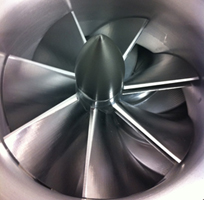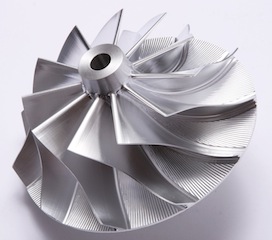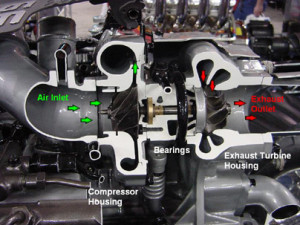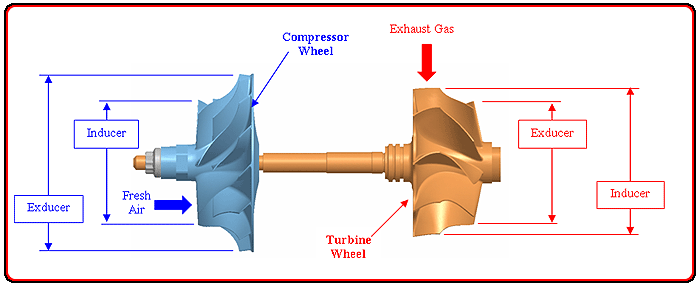With more and more billet compressor wheels on the turbo market than ever, people raise the question: Is it worth it? The truth is it depends on the billet wheel. The first reason for billet wheels was for making a light weight compressor wheel out of a solid piece of aluminum for spool time and over all flow. PTE has the lightest billet compressor wheels on the turbo market today, because they actually remove the most metal from the wheel than any other companies, but they are commonly known for thrust bearing problems which i will explain in another article. Our extended tip compressor wheels are capable of generating more air flow because of the higher blades, however the extended tip wheels are heavier than the regular cast wheels by about 10 grams, but they are worth it because of the wheel capturing more air. These wheels are machined with a 5 axis endmill which precisely cuts the wheel from a solid piece of aluminum. These wheels range from 120 to 400$. The batmowheel billet wheel has proved to flow well, the wheel was derived from GE jet engines from air planes. This shape of the wheel was created to allow air to easily flow behind each blade in front of it. The tips are also extended to grab extra air, just like GE’s jet engines.
The reason for changing the number compressor blades is to determine at what rpm the turbo will flow the most air. The less number of blades the more air it will flow at higher boost levels compared to a compressor wheel with more blades. A compressor wheel with more blades will flow very well at higher boost levels(~30 psi) but will not flow as well at lower boost levels. The Lower the blade count on the compressor wheel will help the turbo flow more air than the same compressor wheel with more blades. The more blades on a compressor wheel will help the compressor wheel have a peak flow at lower boost levels (20-25 psi). However some companies have started to make compressor wheels taller to allow a compressor wheel with more blades to grab more air and to flow better at higher boost levels as well. You will see taller 11 blade compressor wheels in the GTX series compressor wheels which are created by garret. The higher the blade count also helps with spool time, because it captures more air at lower rpm of the turbo. The choice of compressor wheel depends on the what your goals are as far as spool time and the boost level that you plan to run. google622582fe1d69e3ee



